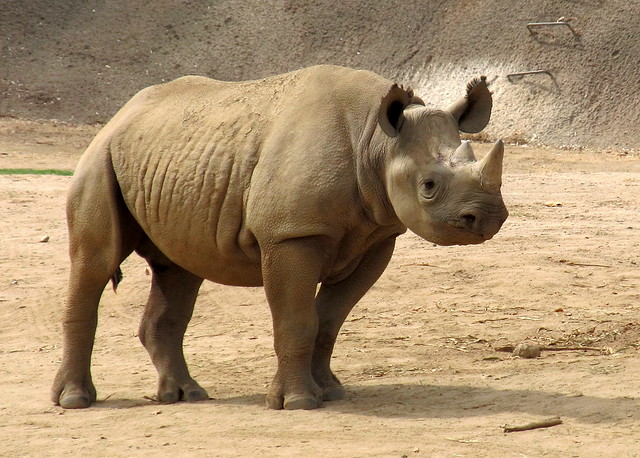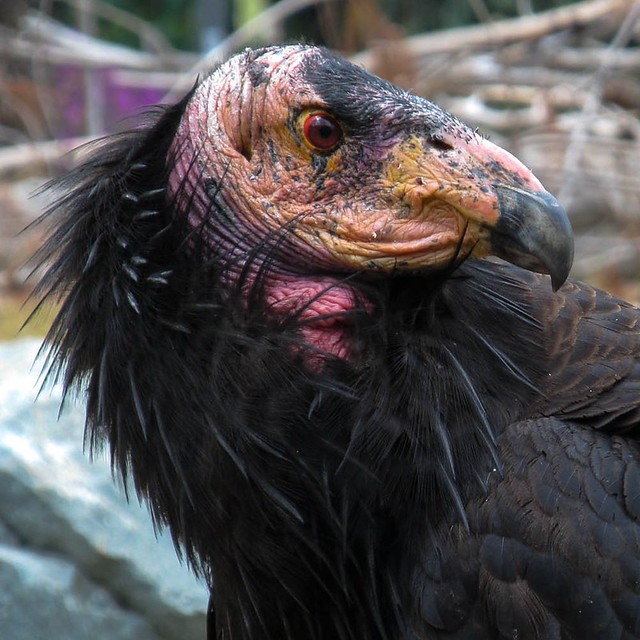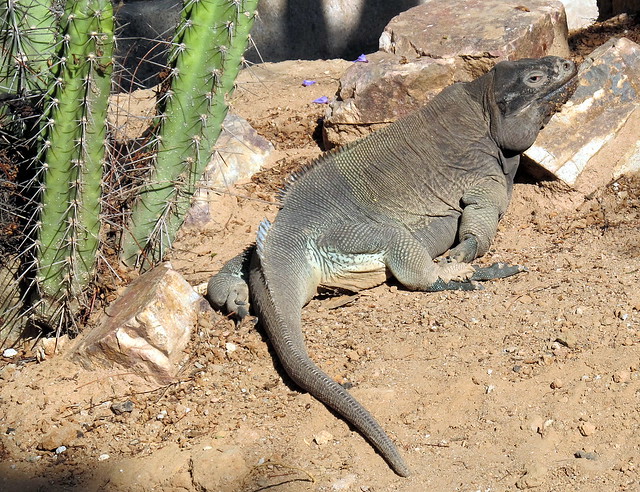"Today we are facing an extinction crisis, with species disappearing every day," said Douglas Myers, chief executive officer and president for San Diego Zoo Global. "To combat this crisis we needed an audacious mission that focuses our efforts toward creating successful outcomes, even if we have to do it by saving one species at a time."
San Diego Zoo Global has more than 132 conservation projects in 62 countries around the world and has reintroduced more than 43 species back into the wild during its almost 100-year history. This is progress! Working together, we can create awareness and make a difference.
In honor of Endangered Species Day, which was last Friday, May 16, San Diego Zoo Global released a list of success stories in the conservation of endangered species. Bringing species back from the brink of extinction is the goal and in my opinion, nobody does it better than San Diego Zoo Global.
The Ten Reasons for Hope are listed as follows:
1) Mountain yellow-legged frog recovered after wildfires. In 2002, fewer than 200 mountain yellow-legged frogs were left in the streams of Southern California's mountains. Four years later, a group of tadpoles was rescued from fire-damaged habitat and brought to the San Diego Zoo Institute for Conservation Research. A team from San Diego Zoo Global, the U.S. Fish and Wildlife Service and the U.S. Geological Survey, U.S. Forest Service and California Department of Fish and Wildlife worked together to reintroduce and reestablish a wild population in the San Jacinto Mountains. Reintroduced males are now beginning to show signs of breeding behavior and scientists hope to see wild-hatched frogs in this area for the first time in 20 years.
2) Giant pandas less rare than before. Not long ago, the future for the giant panda looked grim. Today, the captive population of pandas has reached the milestone of 300 bears, the minimum necessary to sustain 97 percent of the genetic diversity for the next 100 years. With wild populations stabilizing and even increasing, the giant panda may now be close to having its status changed from endangered to threatened.
3) Tecate cypress preserved for the future. San Diego Zoo Global partnered with The Nature Conservancy, the Bureau of Land Management, and the California Department of Fish and Wildlife to preserve the Tecate cypress, a conifer found in Southern California and parts of Baja California, Mexico. Numbers of this noble tree have declined rapidly in the past decade. Plant ecologists collected seeds from one of the last remaining cypress stands in California and established a nursery to produce seedlings. Some of the seeds were frozen and placed in the Native Plant Gene Bank at the San Diego Zoo Safari Park, protecting the species from loss by wildfires in the future.
4) Tasmanian devil population protected from devastating disease. A deadly and contagious cancer called devil tumor facial disease has been wiping out entire populations of Tasmanian devils in the wild. Working with the Save the Tasmanian Devil Program, San Diego Zoo Global experts are helping to monitor healthy populations isolated from the disease so that the species can be recovered.
5) Wild-hatched condors now in Baja California, Mexico. Overall, the California Condor Recovery Porgram now produces 12 to 15 chicks produced annually in the wild. Combined with birds raised in managed care, over 50 condors join the species count each year. In Baja California, Mexico, where San Diego Zoo Global is leading the recovery effort, the first released condors have become parents, with two chicks successfully fledged last year. As more wild condors transfer to natural foods and lead poisoning becomes better controlled, a full recovery of this iconic species could be achieved over the next decade.
6) Baby pocket mice born. In an emergency rescue effort, 22 Pacific pocket mice founders were brought to the Safari Park in the summer of 2012. Housed and monitored at an off-exhibit area, this endangered species, an important seed disperser in its habitat, bred for the first time in 2013 and produced 16 offspring, which are now part of this year's breeding efforts. Eventually, these young mice will be released into coastal habitat to bolster the remaining wild population.
7) Island iguana population booms. Twenty years ago, Anegada iguanas were declining and in serious danger of extinction due to the heavy predation of juvenile iguanas by feral cats. Scientists from the San Diego Zoo Institute for Conservation Research partnered with the Fort Worth Zoo and the British Virgin Islands National Parks Trust in 1997 to begin raising hatchlings on Anegada Island until the juveniles were large enough to survive in the wild. To date, 179 "headstarted" iguanas have been released on Anegada Island, nearly doubling the size of the wild population.
8) Gorillas protected in the wild. Ebo gorillas were identified in 2002 by San Diego Zoo Global researchers in Cameroon's Ebo forest. Numbering less than 25 animals, the gorillas are isolated from the 2 currently recognized western gorilla subspecies and may represent a unique form of gorilla. In 2012, the San Diego Zoo's Central Africa Program established the Clubs des Amis des Gorilles (Gorilla Guardian Clubs) in two villages located less than two miles from the gorillas' habitat. The groups actively work to monitor and protect the rare population.
9) First captive breeding of mangrove finch. The mangrove finch is the most threatened bird in the Galápagos Islands. Threats to the remaining 60 to 80 birds include introduced rats, cats, and disease, with the grimmest hazard being botfly larvae, which infest nests, overtaking and eventually killing chicks. San Diego Zoo Global is partnering with the Charles Darwin Foundation and the Galápagos National Park to employ hands-on techniques to nurture eggs and then chicks until they are large enough to avoid botfly infestations. To date, 15 chicks have been raised and transferred back to a release aviary within the mangrove forest on Isabela Island.
10) Rare Hawaiian bird ready for reintroduction. In 1994, the alala (or Hawaiian crow) population dipped to just 20 birds and the species is extinct in the wild. San Diego Zoo Global's Hawaii Endangered Bird Conservation Program has been working with the U.S. Fish and Wildlife Service and the Hawaii Division of Forestry and Wildlife to turn the tide for this last corvid in the Hawaiian Islands. Thanks to the successful breeding program at our Keauhou and Maui Bird Conservation Centers, the alala population has now increased to 108 birds. There is now the possibility of releasing alala back into the wild in coming years.
The next time I read about a rhino poaching or a habitat that is being destroyed, I will remind myself of these successes. No matter how hard the fight, the important thing is to keep fighting; because eventually there will be another reason for hope.
 |
| Two-year-old Black Rhino, Erik - 2012 |






No comments:
Post a Comment